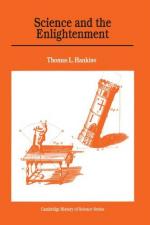
|
| Name: _________________________ | Period: ___________________ |
This quiz consists of 5 multiple choice and 5 short answer questions through Chapter 2, Mathematics and the Exact Sciences.
Multiple Choice Questions
1. The narrator reveals that mathematicians pursued ________, in which the physical object was reduced to a few idealized properties that were capable of quantification.
(a) Psychology.
(b) Analysis.
(c) Rational mechanics.
(d) Synthesis.
2. By what name did natural philosophers want to be known as, according to the narrator in Chapter 1?
(a) Men of Letters.
(b) Men of Honor.
(c) Masters.
(d) Professors.
3. What area of science included astronomy, optics, statics, hydraulics, gnomonics, geography, horology, navigation, surveying, and fortification?
(a) Meteorology.
(b) Mixed mathematics.
(c) Geology.
(d) Botany.
4. What was the name of the path by which an object slides from one point to another that is not on the same vertical line in the shortest possible time?
(a) Involute.
(b) Catenary.
(c) Brachistachrone.
(d) Tractrix.
5. According to Chapter 1, who made Newton into a supreme rationalist whose laws of motion were a priori deductions of pure thought?
(a) Maupertuis.
(b) Marquis de l'Hopital.
(c) Fontenelle.
(d) Roberts.
Short Answer Questions
1. The "Philosophical Letters" was a product of Voltaire's visit to ________ according to Chapter 2.
2. What was the name of the priest of the Congregation of the Oratory, who was also a philosopher, mathematician, and member of the French Academy of Sciences?
3. According to the narrator in Chapter 1, what was the key to a correct method whose model was mathematics?
4. Who became the leading literary figure of the Enlightenment and in 1734 published "Philosophical Letters"?
5. Who coined the expression "Scientific Revolution," according to the narrator in Chapter 1?
|
This section contains 242 words (approx. 1 page at 300 words per page) |

|




